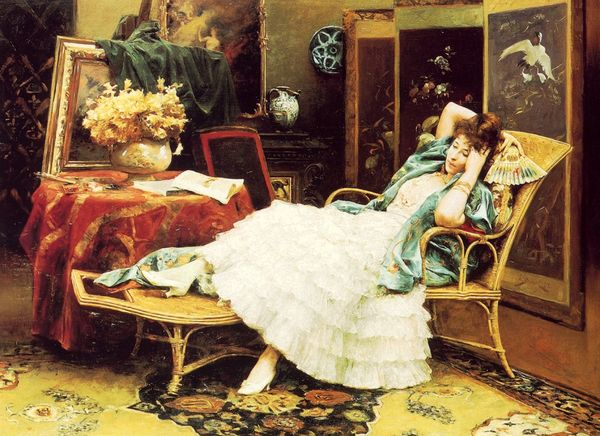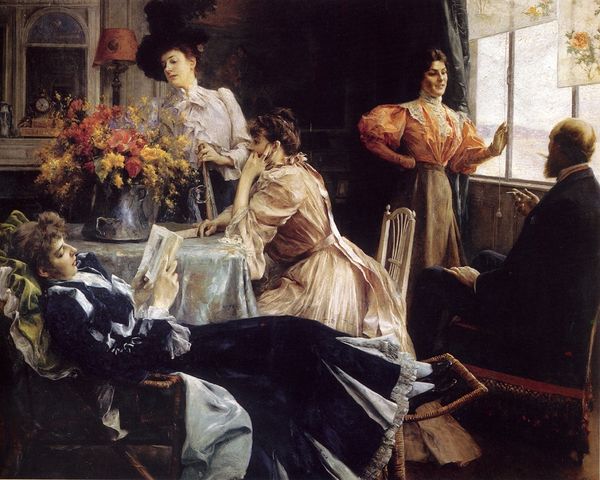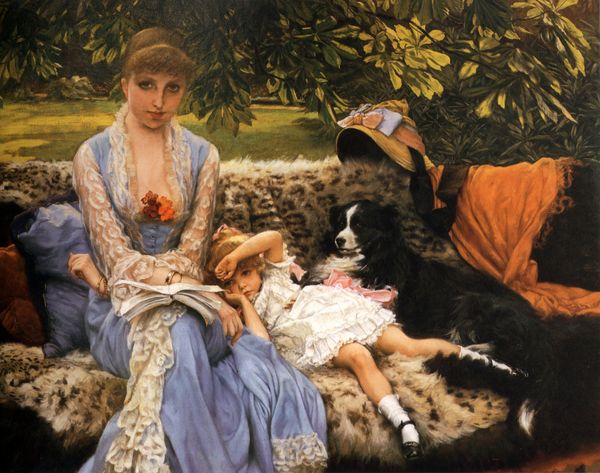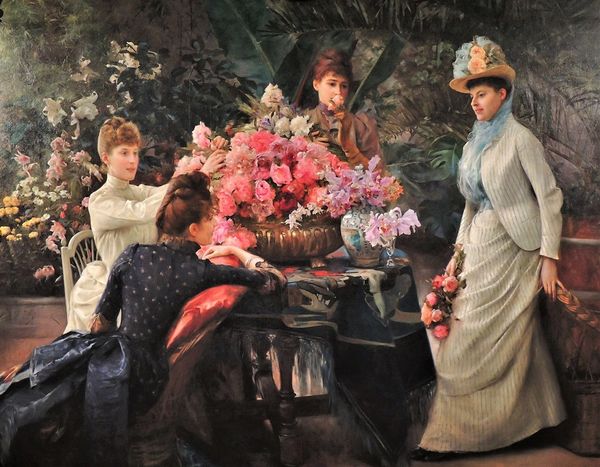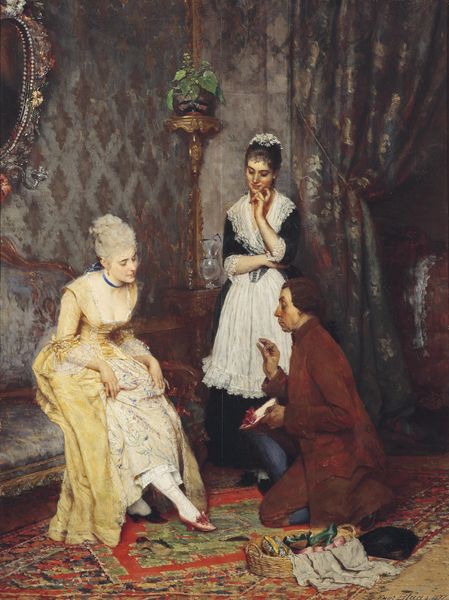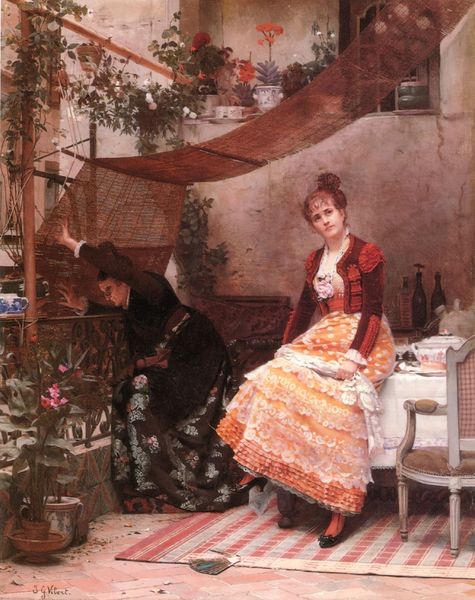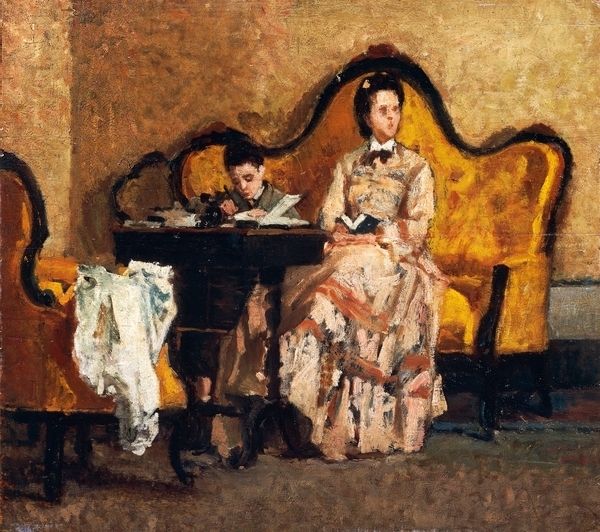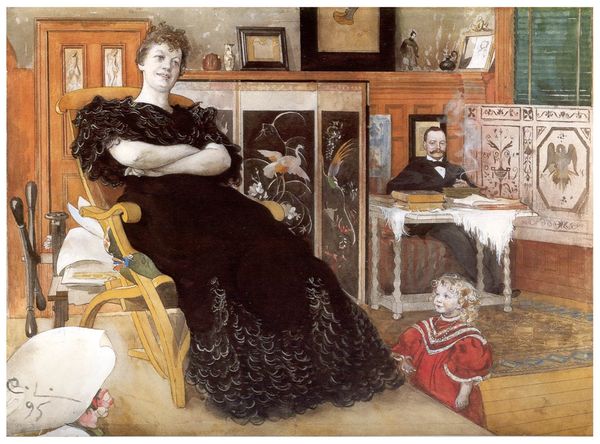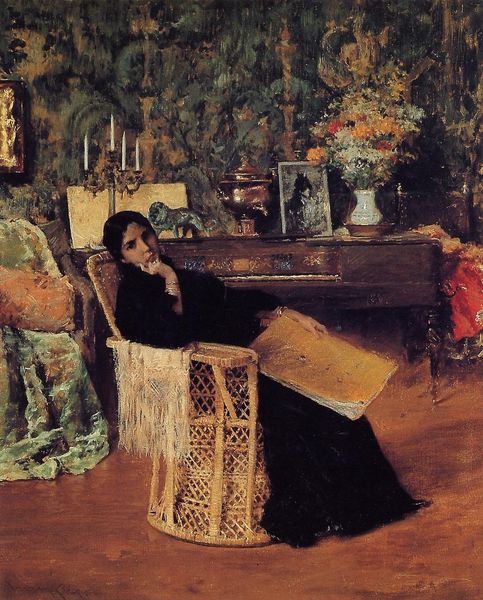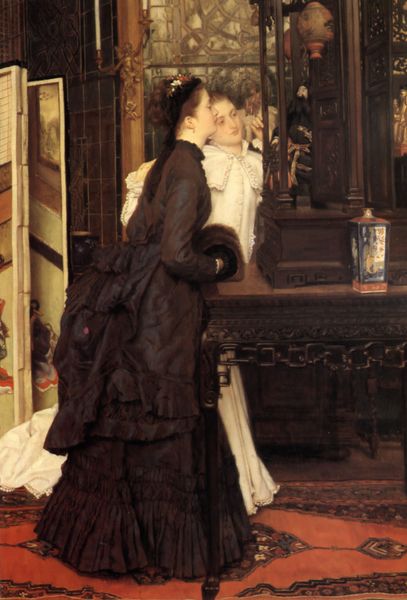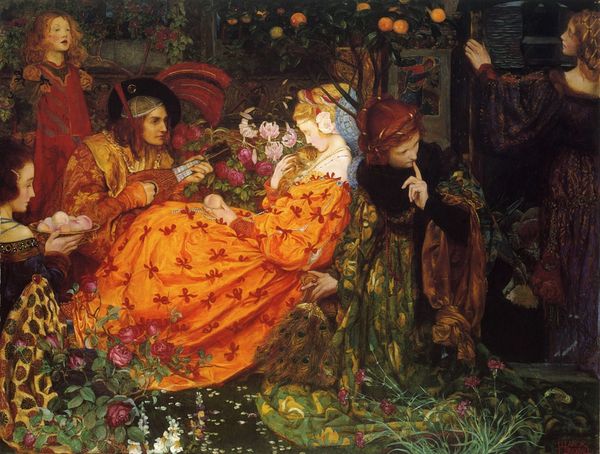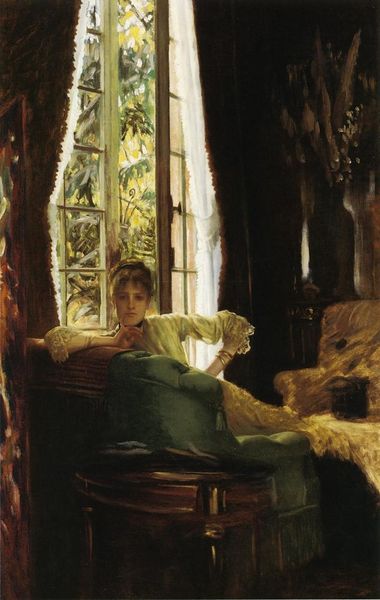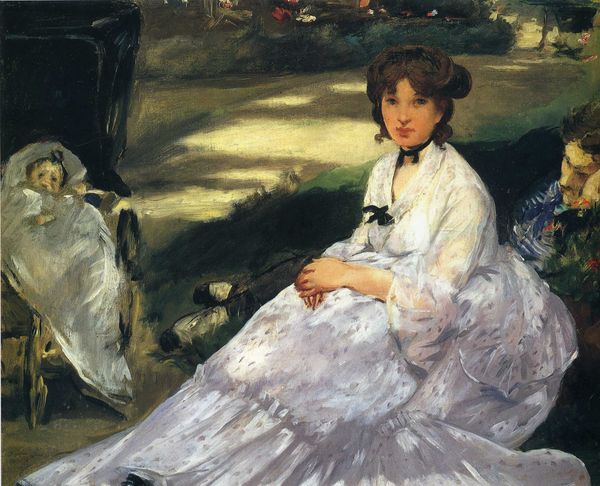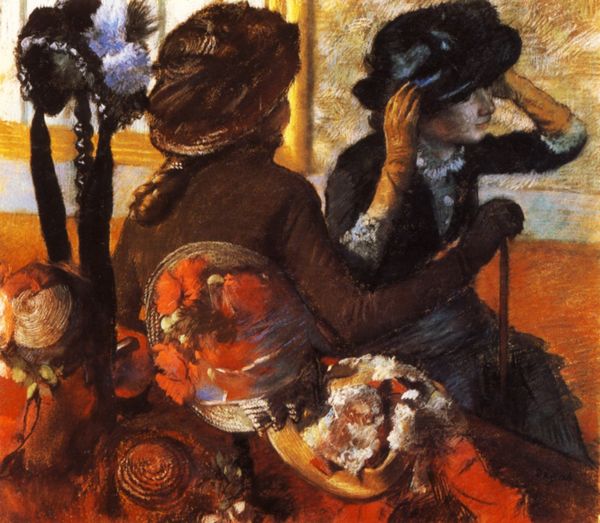
Copyright: Public domain
Editor: So, this is "A Widow," painted in 1868 by James Tissot, using oil paints. The whole scene feels quite somber, yet there's this strange contrast with the beautiful garden setting. There's this tension... what strikes you most about this piece? Curator: That's an interesting observation, a lovely phrase – that “tension.” For me, it's the carefully orchestrated stillness. Imagine stepping into that scene; the air thick with unspoken words, sunlight dappling the leaves, and the weight of loss almost palpable. Tissot's work is less about overt emotion and more about these captured moments of private reflection. Editor: Do you think the other figures enhance the sense of the widow's isolation? The little girl seems so bored! Curator: Precisely! Notice how each figure embodies a different response to grief. The child's restlessness, the elder's escapism in a book, and the widow's… what is it? Resignation? Quiet defiance? It is complex, no? Editor: It is! There is also an imposing and rather ominous looking umbrella... Is that meant to be symbolic? Curator: Well, now you’re asking the real questions! Is the umbrella protecting her, or weighing her down, like grief does sometimes? I don’t know, but these questions *we* bring to the painting – that is important. Tissot makes room for us to ponder these things. Editor: So it's almost as if the painting isn't just about a widow, but about different facets of human experience in one snapshot. Curator: A poetic way of seeing it, my friend. It’s a quiet invitation into the unspoken dramas of life. Isn’t that what all art strives for in some way or another? I like this new insight very much.
Comments
No comments
Be the first to comment and join the conversation on the ultimate creative platform.
